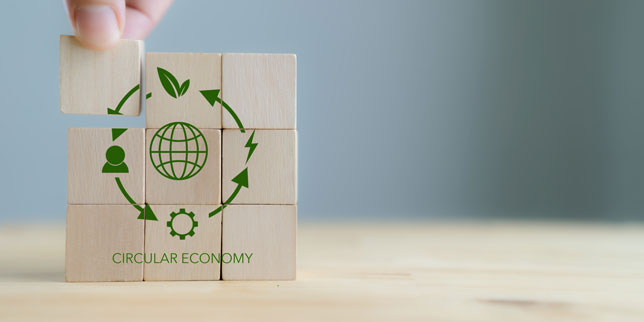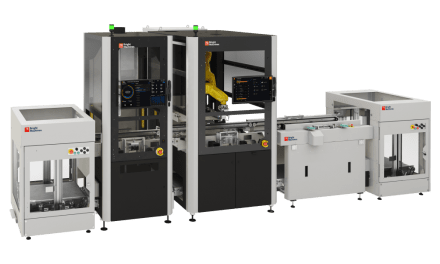How retrofitting boosts the circular economy and improves efficiency

By Neil Sharp, JJS Manufacturing
Retrofitting is the essence of sustainability. It focuses on reusing and repurposing a legacy product (or building) to make it smart. Rather than replacing the product altogether, retrofitting gives it a new lease of life.

Neil Sharp
Many products and buildings can be retrofitted to make use of new technologies by adding sensors or hardware. Using Internet of Things (IoT) solutions, we can connect, monitor, and control devices, equipment, and places that were not originally built with this capability.
The Internet of Things (IoT) refers to any physical device connected to the internet. IoT devices can collect, share, and exchange data with other connected devices or databases. Digital intelligence involves IoT-based solutions that enable devices to communicate and operate without physically being operated by someone.
Using IoT technology, retrofit solutions extend the lifespan of whatever they are modifying and can even help to maintain compliance with evolving standards and legislation. Retrofitting equipment can save money, time, and reduce the environmental impact of updating technology.
When is the right time to retrofit?
Most of us use legacy products, live in a house that is not completely smart, and work in a non-intelligent building. Retrofitting our products and spaces can be an affordable alternative to purchasing the latest version or building an intelligent construction from scratch. It is also a way to contribute to the circular economy.
Start by considering the practical benefits of upgrading products or spaces by making them intelligent. Then calculate any potential mid and long-term savings you can make from improvements.
How can equipment be retrofitted?
There are three principal ways to retrofit equipment to digitally manage it.
Analogue-to-digital converter
Many products do communicate at least a small amount of data, which may come from an analogue transmission. However, this information cannot be used without being converted to modern digital communications. An analogue-to-digital converter sends analogue data remotely via Ethernet or Wi-Fi and allows that data to be monitored by a compatible monitoring system.
Sensors
Integrating new sensors is a challenging part of retrofitting as they must be added to something that does not already have the capacity to communicate the necessary data. Luckily, nowadays, many sensors are available that allow almost anything to be monitored.
Many different types of sensors provide valuable data for digital management, for example:
- Heat sensors monitor devices overheating
- Moisture sensors monitor for flooding
- Vibration sensors monitor mounted devices
- Audio sensors monitor excess noise levels
- Voltage sensors monitor how efficiently something is functioning
Communicating the data and signal
Whether you are monitoring tyre pressure on a single car or an entire supply chain, the data itself is worthless unless it can be used. So, the most important part of retrofitting is using data from sensors or receiving the signal necessary to control the device.
Communication can be either wired or wireless. Wired communication involves the device being directly connected via cable. Wireless communication connects devices close enough to use a Wi-Fi network or cellular communication, which both allow real-time monitoring and control.
Retrofitting technology to make smart systems
C02 sensors to efficiently use energy
Cavendish Engineers were contacted to improve the efficiency of appliances in workspaces across London. The project was driven by the Energy Savings Opportunity Scheme (ESOS) compliance.
The engineers learnt that the fresh air ventilation system was highly inefficient as it was run centrally and constantly at full speed. So, they designed an intelligent system using real-time workspace data from solar-powered, wireless technology CO2 sensors. The idea is that the higher the level of CO2 in a given area, the more people are in the area. The sensors were retrofitted on each floor of each building to receive an accurate measurement of CO2 throughout the day, which controlled the air ventilation system based on demand.
How hard the system works depends on the level of occupancy. And the result is that the building reduces its energy consumption—good for the planet and achieved by embracing the circular economy.
Heating buildings by detecting occupancy level
Occupants in a building need to be given the right level of comfort, but heating a building with no one in it makes no sense. Manual checks or CCTV monitoring could work but are time consuming and inefficient.
However, IoT sensors can detect the presence of people in a room. The sensors collect data that is sent to an occupancy-based heating control system, which controls the temperature on a per-room level.
Predictive maintenance technology in cars
Predictive maintenance technology employs retrofitted sensors that use IoT connectivity tools, which collect data on how these different parts perform. This data is transferred to the cloud in real-time, and machine learning predicts potential malfunction risks of a car’s hardware or software. The driver receives a notification and is told what needs to be serviced or repaired before any incident occurs.
For example, battery life can be monitored by predictive maintenance technology, so the car will never break down due to a dead battery. The issue can be fixed before it turns into a problem.
Managing traffic lights
Legacy traffic light systems were programmed to change after a pre-established time. However, they can now be retrofitted with many sensors, including heat and moisture-sensitive sensors to monitor the weather and provide better traffic light control.
For example, the brightness and intensity of traffic lights can be adjusted in different light conditions. Brightness adjustment is beneficial since it saves energy and prevents accidents caused by blinding lights.
Moreover, congestion can be reduced by data feeds attached to sensors at traffic lights. These collect data on roads with high-traffic crossings and adjust the traffic lights accordingly. The sensors detecting heavy traffic can also be further analysed to advise drivers of alternative routes and improve traffic signals to reduce congestion.
Making patients comfortable in hospitals
Staying in a hospital is a stressful experience, but retrofitting rooms with sensors so patients can control their environments could improve the healing process and reduce the burden on staff.
Smart hospitals use patient terminals or tablets to provide information, entertainment, and process optimisation. For example, patients can control their temperature, lighting, and shading, which dramatically improves their satisfaction and reduces stress. Staff don’t have to worry about the patient’s environmental comfort, and recovery could be accelerated by providing natural lighting that follows the course of the day.
Sensors detect changes in the environment or in a source. They collect signals and turn this into data, which they send via the internet to create a reaction. Sensor technology has improved our lives in almost every field imaginable—including healthcare, motoring, manufacturing, and fitness. Retrofitting legacy products or old buildings with sensors contributes to the circular economy, saves money, and improves efficiency—a win, win, win.












